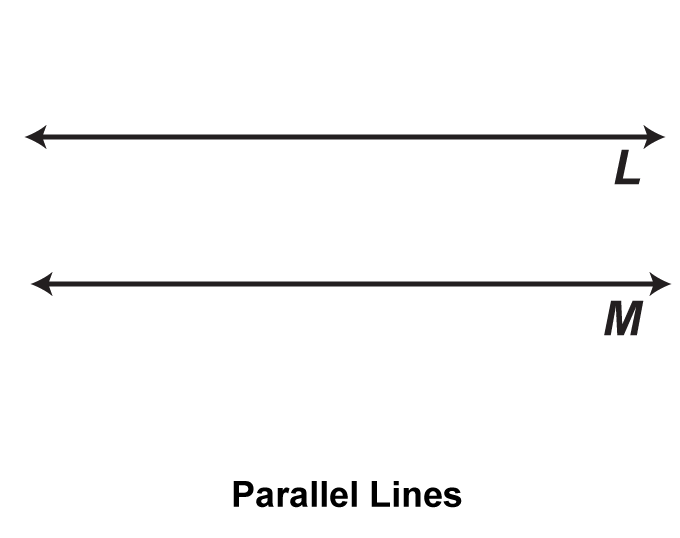
Display Title
Math Clip Art: Parallel Lines Cut by a Transversal 1
Display Title
Math Clip Art: Parallel Lines Cut by a Transversal 1

Topic
Geometry
Description
This math clip art image is part of a series that illustrates the properties of parallel lines cut by a transversal. In this particular image, we see two parallel lines without a transversal, serving as an introduction to the concept. The image is designed to help students visualize and understand the fundamental idea of parallel lines before exploring more complex relationships.
Using math clip art like this in geometry lessons can significantly enhance students' understanding of abstract concepts. Visual representations make mathematical ideas more tangible and accessible, especially for visual learners. This image of parallel lines can be easily incorporated into lessons on geometry, serving as a starting point for discussions about parallel lines and their properties.
Teacher's Script: "Class, take a look at this image. What do you notice about these two lines? They never intersect, no matter how far we extend them. These are called parallel lines. Today, we're going to learn about what happens when we introduce another line that crosses these parallel lines. This will help us understand some important geometric relationships."
For a complete collection of math clip art related to Geometry click on this link: Parallel Lines Cut by a Transversal Collection.
You can download 50+ Free 7th Grade Math Worksheet from here.
Parallel Lines Cut by a Transversal
Parallel lines are on the same plane and do not intersect. Here are two lines, L and M, that are on plane P and parallel.
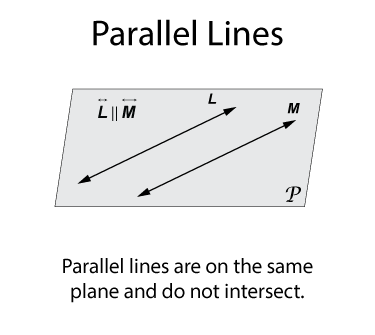
Parallel lines are are always the same distance from each other. In this illustration the dashed segment indicates the distance between the two lines. That distance doesn't change.
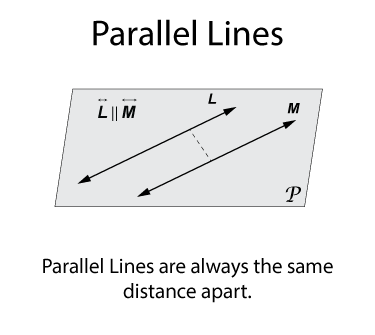
A line that intersects the parallel lines is called a transversal. In the illustration below you can see transveral N that insersects lines L and M.
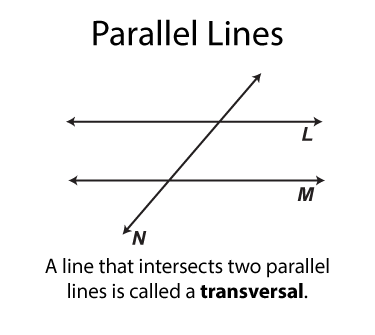
When parallel lines are cut by a transversal, there are number of set of angles whose properties are important to remember. The categories of angles include:
- Alternate interior angles
- Alternate exterior angles
- Same side interior angles
- Same side exterior angles
- Supplementary angles
- Vertical angles
Let's start with the alternate interior angles, which are shown here. There are two sets of alternate interior angles. These pairs of angles are congruent. The word "alternate" means "opposite" In each case the one angle is on the opposite side of the transversal from the other angle.
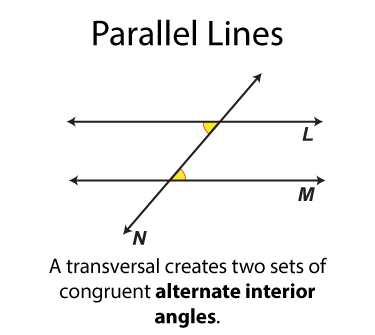
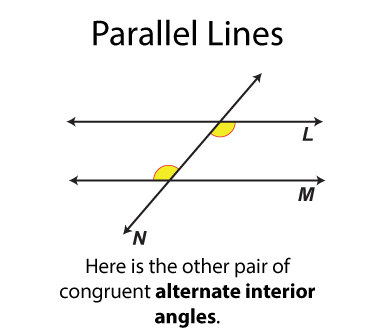
The next set of angles are called alternate exterior angles. There are two sets. Each set of angles is congruent. Each angle is on one side of the transversal from the other angle it is congruent to.
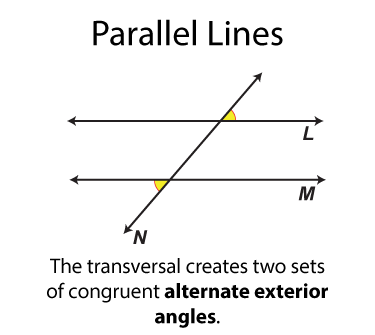
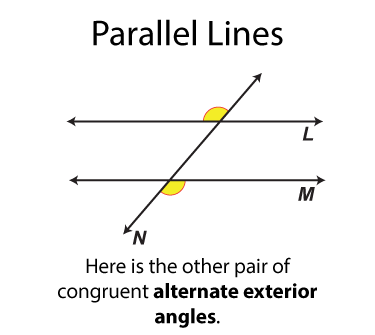
The next set of angles are called corresponding angles. There are four sets. Each set of angles is congruent. Each set of angles is on the same side of the transversal.
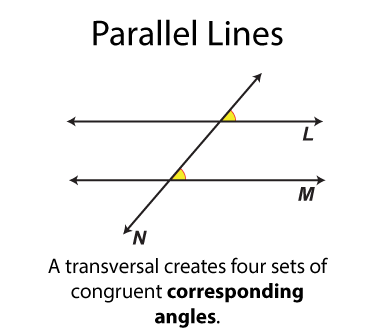
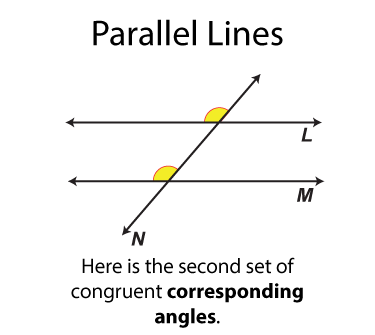
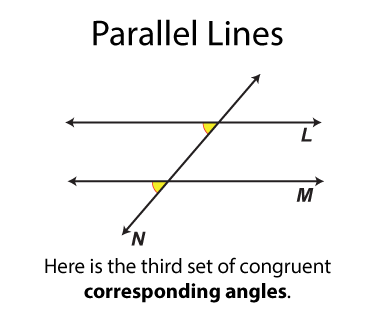
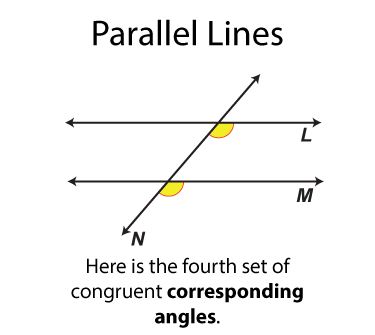
The next set of angles are called vertical angles. There are two sets. Each set of angles is congruent. (By definition all vertical angles are congruent.) Each angle is on on the opposite side of the transversal from the other angle it is congruent to.
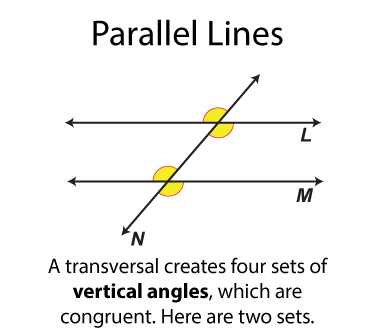
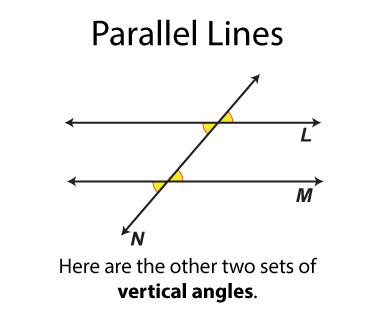
The next set of angles are called vertical angles. There are two sets. Each set of angles is congruent. (By definition all vertical angles are congruent.) Each angle is on on the opposite side of the transversal from the other angle it is congruent to.


The next set of angles are supplementary angles. There are eight sets. By definition the supplementary angles add up to 180°. Some pairs of supplementary angles are on opposite sides of the transversal and some are on the same side.
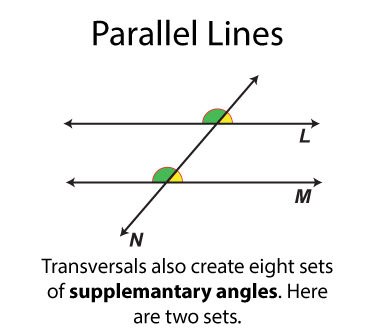
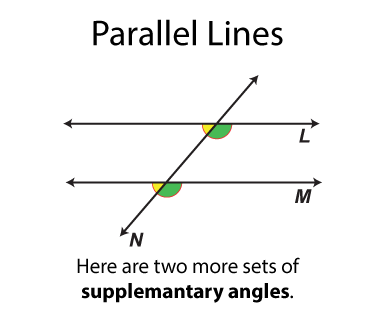
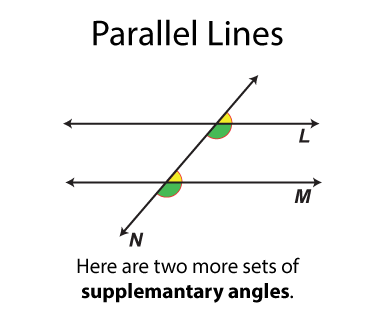
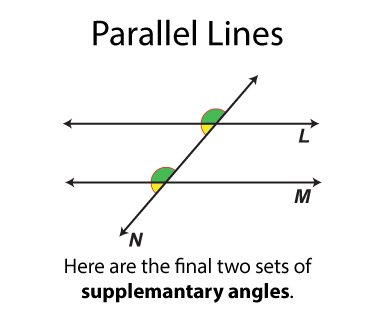
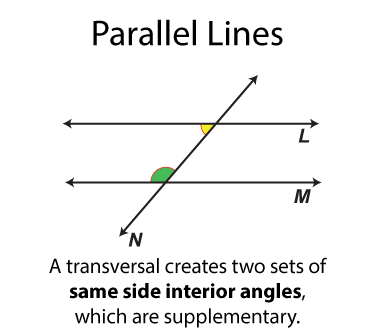
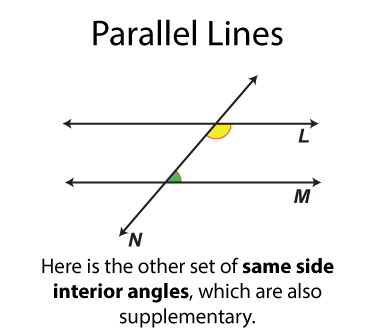
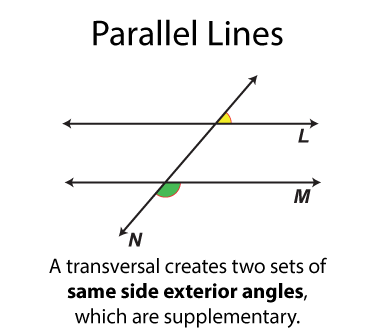
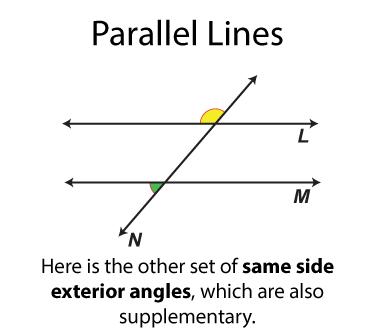
| Common Core Standards | CCSS.MATH.CONTENT.4.G.A.2, CCSS.MATH.CONTENT.8.G.A.5 |
|---|---|
| Grade Range | 4 - 8 |
| Curriculum Nodes |
Geometry • Points and Lines • Parallel Lines |
| Copyright Year | 2014 |
| Keywords | Parallel Lines Cut by a Transversal, parallel lines, transversal, vertical angles, supplementary angles, alternate interior angles, alternate exterior angles |